LIZARDS
ALL LIZARDS
- For the most part, in the U.S. they are located in every state
- Lifespan for some is up to 50 years
- Most closely related to snakes
- In general, lizards have a small head, short neck, and long body and tail
- Most lizards have moveable eyelids.
- Lizards smell things with their tongue
- They have dry scaley skin that does not grow - They shed or molt
Below: A Green Anole [Top] Frilled Lizard [Bottom]
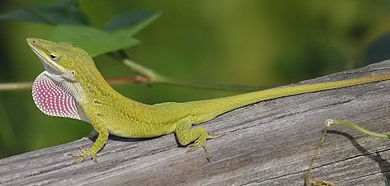
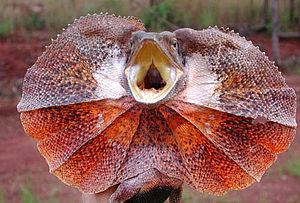
VENOMOUS
Until 2006 it was thought that the Gila monster and the Mexican beaded lizard were the only
venomous lizards. However, several species of monitor lizards, including the Komodo dragon,
produce powerful venom in their oral glands. Lace monitor venom, for instance, causes swift
loss of consciousness and extensive bleeding through its pharmacological effects, both
lowering blood pressure and preventing blood clotting. Nine classes of toxin known from
snakes are produced by lizards. The range of actions provides the potential for new medicinal
drugs based on lizard venom proteins.
Most of the venomous lizards are located either in the south west or Mexico and south
Gila Monster:
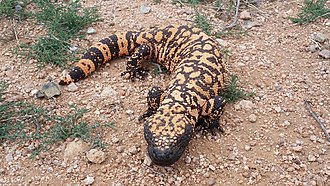
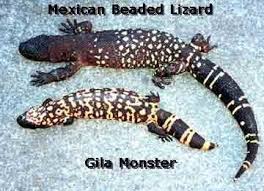
General Facts About Lizards
They are able to live in a wide range of habitats, including deserts, water or wetlands. They can live on the ground or under it, in trees and when available will move into houses. Some of them are carnivores while others are omnivoires, which means they eat just about anything. They all feature a tongue which allows them to pick up scent all around them.
They all have a skeleton system, vertebrae and ribs that they use for movement. This helps them to get around. Some don't have limbs like thew legless lizards. They don’t have external ears but do have eyelids. They can pick up vibration and tasting the air to help them find out what is around them. They also use their vision combined with smell to find out about dangers.
Most species are not aggressive. They will usually retreat from any forms of danger that they may detect. However, if they feel threatened or cornered, they will strike in order to protect themselves.
Some lizards are isolated creatures while others live in groups. They do come into contact with each other when hunting for food and during mating season. The males will fight each other sometimes for the right to mate. Some are also canibalistic, eating their young or other lizards to survive.
Most lizards can chew, thus when they take in food they tend not to swallow it whole.
Believe it or not, some lizards can "poop" on demand. They do this to make themselves smelly so predators will not eat them. They also do this when humans pick them up or try and catch them.
Evolution of Lizards
Fossil History: The earliest known fossil remains of a lizard belong to the iguanian species Tikiguania estesi, found in the Tiki Formation of India, which dates to the Carnian stage of the Triassic period, about 220 million years ago. [2][3] However, doubt has been raised over the age of Tikiguania because it is almost indistinguishable from modern agamid lizards. The Tikiguania remains may instead be late Tertiary or Quaternary in age, having been washed into much older Triassic sediments. Lizards are most closely related to the Rhynchocephalia, which appeared in the Late Triassic, so the earliest lizards probably appeared at that time. Mitochondrial phylogenetics suggest that the first lizards evolved in the late Permian. It had been thought on the basis of morphological data that iguanid lizards diverged from other squamates very early on, but molecular evidence contradicts this.
Evolution Of Venom
Venom in snakes and some lizards is a form of saliva that has been modified into venom over its evolutionary history. In snakes, venom has evolved to kill or subdue prey, as well as to perform other diet-related functions. The evolution of venom is thought to be responsible for the enormous expansion of snakes across the globe.
The origin of venom is thought to have provided the catalyst for the rapid diversification of snakes in the Cenozoic period, particularly to the Colubridae and their colonization of the Americas. Scholars suggest that the reason for this huge expansion was the shift from a mechanical to a biochemical method of subduing prey. Snake venoms attack biological pathways and processes that are also targeted by venoms of other taxa; for instance, calcium channel blockers have been found in snakes, spiders, and cone snails, thus suggesting that venom exhibits convergent evolution.
The various recruitment events had resulted in snake venom evolving into a very complex mixture of proteins. The venom of rattlesnakes, for example, includes nearly 40 different proteins from different protein families, and other snake venoms have been found to contain more than 100 distinct proteins. The composition of this mixture has been shown to vary geographically, and to be related to the prey species available in a certain region. Snake venom has generally evolved very quickly, with changes occurring faster in the venom than in the rest of the organism.
Venom that is toxic only to a certain animal, or strongly toxic only to a certain animals, has been found in a number of snakes, suggesting that these venoms have evolved via natural selection to subdue preferred prey species. Examples of this phenomenon have been found in the Mangrove snake Boiga dendrophila, which has a venom specifically toxic to birds, as well as in the genera Echis and Sistrurus, and in sea snakes. While several snakes possess venom that is highly toxic to their preferred prey species, the reverse correlation is not necessarily true: the venoms of several snakes are toxic to taxa that they do not consume in high proportions. Most snake venom, for instance, is highly toxic to lizards, although the proportion of lizard prey varies among snake species. This has led researchers to suggest that toxicity to a certain animal is nearly independent of toxicity to another distantly related animals.
Difference Between Venomous and Poisonous
Generally, venomous refers to animals or insects that inject or bite someone or something. Poisonous refers to something you might typically eat or absorb into your system.
Snakes and certain lizards are venomous. Toadstools, insecticide and other like items are poisonous.
Pictures of Common Lizards
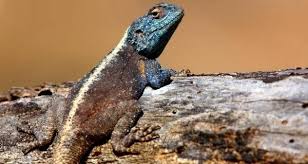
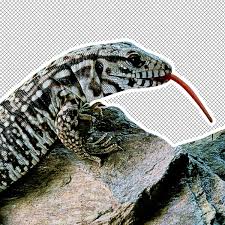
Pictures of Common Lizards
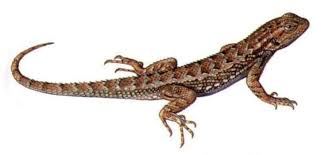
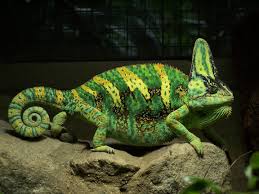
My Favorite Lizards As Pets
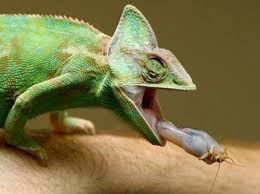
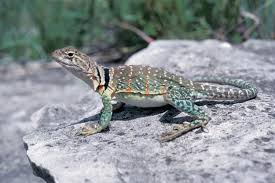
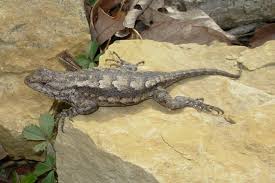

More Lizards For Pets
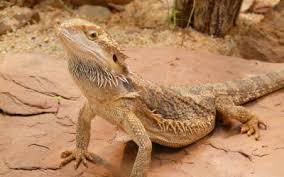
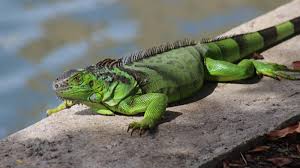
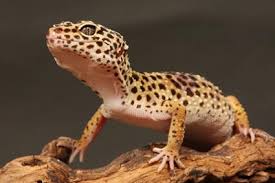
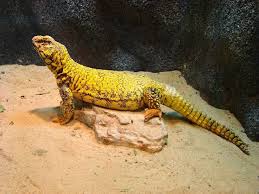
Lizards As Pets
I have been a breeder of reptiles, including snakes, lizards and turtles since the early seventies. I, at one point had over 200 snakes of different species. Most were used for breeding purposes as I sold to zoo's, pet stores, private collectors and individuals.
The one thing I learned was that they all have their own personalities. Some are always aggressive while others are gentle and easy to handle. Some can live up to twenty-years in the wild while others only make it days or weeks.
I personnaly think that lizards, depending upon the species and type make an excellent first pet.
So, what ones made it to my top ten list and which ones I like but take extra care:
- Bearded Dragon
- Moroccan Uromastic or Spiny Tailed Lizard
- Leopard Gecko
- Veiled Chameleon
- Green Basilisk
- Spiny Tailed Monitor
- Mountain Horned Dragon
- Blue-Tongued Skink
- Panther Chameleon
- Crested Gecko
- Agamas
- Argentine Tegus
- Frilled Lizards
- Water Monitors
- Swifts
- Iguanas
- Savanagh Monitors
- Collared Lizard
- Gila Monster
- 5 Lined Skink
Bearded Dragon
These are on the medium side of lizard pets, ranging from 12 to 24 inches, so they will need a larger enclosure than some of the aforementioned geckos. Their tail does not detach, and if it does break or get injured, it does not regrow. Bearded dragons are native to Australia and are very gentle as pets, often seeking out attention and interaction. They are semi-arboreal and enjoy having branches to climb on to bask. They are diurnal and omnivorous, and as they mature need more vegetables than insects. Beardies get their name from the way they puff out their throat when threatened, looking much like a beard. Some dragons go into a period called brumation in the winter months that is like hibernation.
While these are some of the most rewarding and easily cared for lizards, they each have a specific and unique temperature, humidity and habitat requirements.
Moroccan Uromastic
Also called the "Corn Snake" are colorful and mild mannered. They come in numerous color patters and morphs. They can live for over twenty-years and get up to five to six feet long. These snakes make a good "First Pet Snake."
Leopard Gecko
These are one of the easiest lizards to care for and one of the most gentle. They are also one of the only lizards that have movable eyelids. "Leos" are nocturnal insectivores and get their name from the spots they develop as adults. As hatchlings, they have bands of color across their body that gradually fade as they mature. These lizards don't have sticky lamellae on their feet, but instead have tiny claws at the end of each toe, making them ground dwellers.
Leopard geckos shed their skin in one piece and then... they eat it! The skin provides some nutrients and makes their whereabouts unknown to predators. These geckos are less prone to caudal autotomy but will detach their tail if threatened. This can prove difficult for the lizard since the tail is where they store the majority of their fat. The tail does regrow but looks slightly different when it does. Depending on the morph, they range in color from bright yellows and oranges to pale lavender and white.
Veiled Chameleon
This pet reptile is known for its crazy eyes, long tongue and ability to change color. While yes, they do change color, it is a myth that they can camouflage against different backgrounds.They change color due to environmental factors such as stressors, threats and humidity and temperature changes.
Chameleons have a prehensile tail and are mainly arboreal, spending almost all of their time off the ground
They are the only reptile that can move each eye independently of the other and their tongue is anywhere from 1 to 1.5 times the length of its body.
An incredible creature to watch for hours as they climb amongst the branches, chameleons are easily stressed with frequent handling. So if you get one as a new pet, be mindful of how much you take them out of their comfortable environment!
Green Basilisk
The green basilisk is a long and thin lizard from tropical Central America. It is generally green or green/blue with dark stripes towards the back of the tail and height of the abdomen. Males of the species are generally larger and have large plumes on the head, running along the spine and down the tail.
This lizard will spend most of its time in trees above or around bodies of water. When threatened it can rear up using its tail as a stabiliser and run extremely quickly. It can also dive into water to attempt to avoid predators. One of the most interesting aspects of this lizard is that it has hydrophobic scales on the underside of its feet which allow it to run for short times over water. This is how the lizard gained its nickname, the 'Jesus Christ' lizard.
Spiny Tailed Monitor
Spiny tail monitors are long and lithe ground dwelling monitor lizards found in the Northern and North West territories of Australia. They are generally brown and beige in colour with either a red or yellow tinge depending on the lineage. The tail is generally 50-60% of the body length when fully grown.
The spiny tail monitors are normally found in gaps between rocks or under slabs around rocky outcrops. Their metabolism and energy levels are quite low compared to other Australian reptiles so they are often spotted waiting in ambush for prey. In the day time they generally move between taller basking spots and warm shaded areas picking up whatever prey they might find on the way. The most common of which include beetles, cockroaches, small lizards and mammals.
Mountain Horned Dragon
In the wild, the natural habitat for Mountain Horned Dragons in the high canopy of rainforests near water sources. They are tree dwellers, spending most of their time above ground. They are very well adapted to living in trees and like to climb.
They are an intermediate care reptile and will need a large and tall custom enclosure when they are adults. Young dragons can be kept in something like an Exo terra 18" x 18" x 36" for about the first 6-8 months of life. After your Mountain Horned Dragon out grows its starter enclosure, or if you begin with one 6 months or older, you need to have a larger enclosure such as the Exo Terra med tall (36" x 18" x 36"). We don't recommend screen enclosures for these dragons as it can be very difficult to keep the humidity right. There are many suggestions online for making an enclosure, as well. If you have space, go bigger than the minimum. Designing an enclosure for your Mountain Horned Dragon can be fun. Add branches or structures for climbing on.
For substrate, you want something that holds humidity well, like Zilla jungle mix or Zoo med eco earth. If you want two or more of these, make sure there is only one male. Multiple males can fight, especially if females are present. Also increase the size of the enclosure.
Blue-Tongued Skink
Blue-tongued skinks are naturally found throughout the warm woodlands and grasslands of Australia. There are several closely related species referred to as blue-tongued skink but the one most commonly kept are the northern and eastern blue-tongued skinks.
They are often found waiting in ambush for any arthropod that might pass by, resting in a burrow or making their way through tall grass and forest floors. The natural blue-tongued skink habitat most commonly consists of compacted sandy soil with scrubland plants.
Panther Chameleon
Panther chameleons are a beautiful species of arboreal lizard found on the north eastern section of Madagascar. They are normally found within the denser sections of forest and jungle where the prey and cover is abundant.
The panther chameleon can change drastically in color depending on where its ancestor was found. These are known as different locales. In captivity the panther chameleons are generally bred within their own locale groups to maintain the colour patterns for that area.
As with other chameleons there is a stark contrast between male and females of the species. Males are generally very colourful with distinctive patterns running the length of their abdomen. They are generally taller and longer lived than females. The females have a less prominent crest, remain a salmon pink colour for the majority of their lives and are usually much smaller than the males.
This chameleon is a brilliant hunter and can spot its prey from up to 10m away. They normally remain still on their branch with leaves in the backdrop to break up their shape. The eyes move individually looking to spot prey then come together to provide depth perception when attempting to strike. The chameleon is extremely accurate with its extendable tongue and can catch many insects, amphibians, small reptiles or small mammals.
Crested Gecko
These geckos are known for their crests that run along their head and body and make them look like they have long eyelashes. Crested geckos are mainly arboreal and easy to care for. They are nocturnal and love climbing and jumping. Due to their love of climbing, these geckos need a tall enclosure, as opposed to a wide tank-like enclosure
These geckos are omnivores and feast on both insects and fruits. There are a wide variety of commercial diets readily available for easy feeding. Like most geckos, crested geckos can also experience caudal autotomy; however, the crested gecko does not re-grow their tail once dropped. These geckos are brighter in color and "fire up" at night when they are most active and their colors are dull during the day when they are resting.
Pictures of Pet Lizards

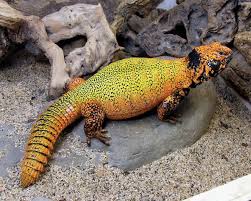
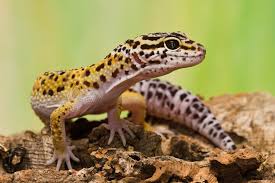

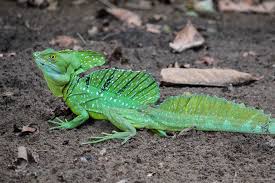
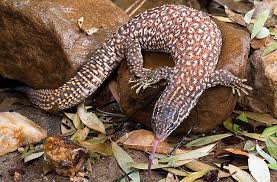
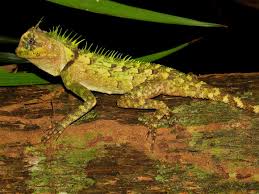
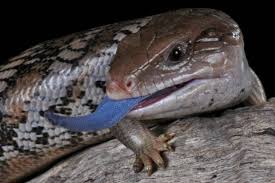
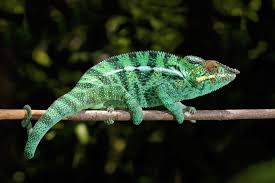
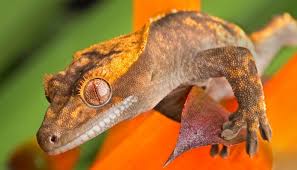
Pictures Of More Lizards As Pets

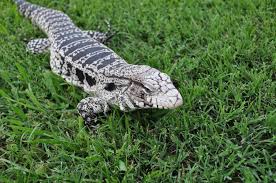
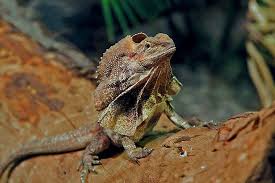
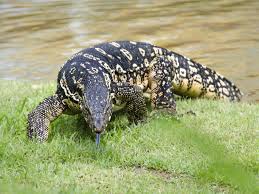
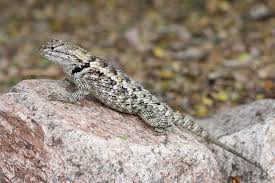

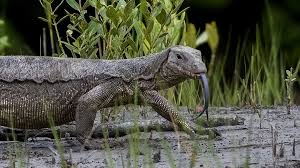
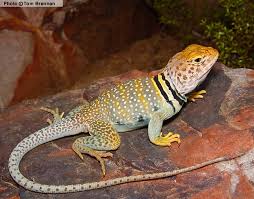
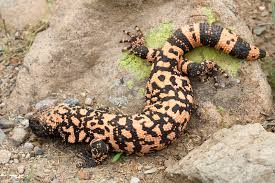
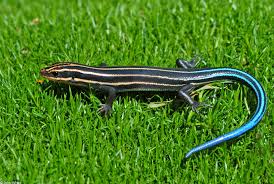
Taking Lizards From The Wild
My answer would have to be NO.
While it is tempting to snatch one when you're out walking the lizards do serve a purpose:
- Wild caught reptiles tend to be more aggressive as compared to domestic raised although they do calm donw - sometimes
- Captive bred eat better then wild caught. Some wild caught never eat and die
- You're putting a strain on the ecosystem
- Wild caught tend to be more unpredictable
- The lizards in the wild are a major food source for snakes and small mammals as well as birds
When is it ok to remove wild lizards from the environment?
- Breeding purposes for endangered, threatened or protected species
- Relocation due to things like construction
- If you find an injured animal. Take it to a rehab facility.
Venomous Lizards As Pets
I kept and bred venomous snakes and lizards for years. I specialized in Asian and African Cobras. Loved them. Even though they have the potential to kill a human they were fascinating animals.
I also had a pair of breeding Gila Monsters. They were purchased from a breeder in Florida. The colors were beautiful, and you could handle the animals.
They still require the same things as their non-venomous siblings, food, shelter, water, heat and light, however handling is a bit different. You must be very careful. You won't die from their bite but the venom is said to be like that of a rattlesnake, and some rattlesnake venoms are quite toxic.
They produced several clutches of egss, thus making me some money and paying me back for their purchase. They're not cheap!!!
So, what are the venomous lizards again:
- Gila Monster
- Beaded Lizard
- Komodo Dragon
- Lace Monitor
- Other Monitors
- Certain Iganuas
The igaunas, monitors and bearded dragon are believed to have glands in their mouth that produce a venom or toxin. To a human the bite is not harmful or fatal. If you're a small mouse or rodent it's a different story.
I'm not going to say that they make or don't make good pets. I like them and I know other people that like them. just be careful
The Gila Monster
NOTE: Only captive-bred Gila Monsters can be legally bought and sold (wild-caught animals are prohibited). And some states restrict or ban the keeping of any Gilas as pets altogether.
The Gila Monster is the only venomous lizard found in the United States. As such, it is an advanced care reptile. The venom is stored in glands that are in the lower jaw and is secreted through the teeth. A Gila is often docile which can lead you into a false sense of security. At anytime, it could bite. The venom is not deadly to a healthy adult human unless you are allergic, but it can be quite painful. Sometimes, the only way to get the lizard to release its hold may be to submerge it in water. Be smart. Wearing leather gloves when handling them.
They eat small rodents and eggs in the wild. Eggs are not recommended when in captivity.
Beaded Lizard
Mexican Beaded Lizards do not make good "pets". But for a serious herp enthusiast, their habits and environment requirements make them ideally suited for captivity and visual enjoyment. Despite their size, they don't require a lot of area for activity, and they are relatively easy to keep. As in the Gila Monster the lower jaw secretes the venom as the lizard chews.
The beaded lizards are beautiful animals, and the Mexican Beaded Lizard can be very enjoyable to the experienced herp keeper. They require permits to be owned in many states, and in some states, while the state may not have a law, the city may have regulations regarding these animals.
They closely resemble the Gila Monster in many ways, except for being larger and darker colored. These lizards use venom primarily as a defensive weapon. These beautiful lizards can grow to be up to3' (91 cm) in length and weigh around three and a half to five pounds, the females are slightly smaller. The largest males have been known to get to 40" (101 cm) and weigh close to ten pounds. They have a long life span, living 30 to possibly 50 plus years.
Komodo Dragon
Can you keep a Komodo Dragon as a pet:
NO... They are on the vulnerable list, grow big enough to eat a human and sometimes have a very bad attitude, not to mention that they are venomous.
The average lifespan of a wild Komodo lizard goes up to 30 years, and it takes 8-9 years for hatchlings to mature into adults.
Komodo monitors can grow up to 10 ft (3 meters) in length and weigh up to 154 pounds (70 kilograms), with males being bigger than females. Typically, males weigh 174 to 201 lb and grow up to 2.59 m (8.5 ft) long while females weigh 68 to 73 kg and measure about 2.29 m (7.5 ft)
Lace Monitor
Most of the lace monitor’s body is covered with blue grey scales on the top with cream underneath. The blue grey areas are patterned with cream coloured spots and bands. A variation on this general pattern exists which has yellow bands across the body instead of spots. Their tail is blue grey and ringed with cream bands which begin narrow and expand towards to the base of the tail. It makes up around half of their length. The tongue is forked like that of a snake. Their toes have long claws which they use to climb. Adult lace monitors measure between 1.5 and 2m (5 and 6.6ft). On average, they weigh 20kg (44lbs).
Predators of the lace monitor include dingoes and birds of prey. One form of defense is a mild venom which is present in their saliva. These animals are active during warmer weather. When it cools, they take shelter in a tree hollow or beneath a fallen tree or rock. Because of their strong claws they are able to climb trees which they can use as a means of escaping predators. Lace monitors are also competent swimmers.
Other Monitors
Water Monitors: Water Monitors are huge! They are one of the biggest species you can own. They can reach lengths of 7-8ft and weigh a 60-70lbs. While they are massive monitors, they are surprisingly good candidates as pets for those that have the space and have done copious amounts of research. They have amazing intelligence, inquisitive, and quite interactive with their owners. Water monitors tame down quite well, and can be surprisingly docile and gentle for such a large reptile. If you have the space, money (for care, enclosures, feeding) and the time, consider this species.
Savannah Monitors: Savannah Monitors are another very popular pet store species. They are smaller than some of the giants (only around 4ft) but are known to be aggressive when young. Some specimens will carry that aggression over to adulthood, though it is rare. The majority of Savannah Monitors who are cared for properly, and treated kindly, become quite friendly. Care for Savs is very similar to any type of monitor care. Though they are a common monitor in the pet trade, they should be treated with respect just like any other monitor.
Monitor Summary: Monitors are a very special niche of lizard species. They are by far much more intelligent than any other reptile, and even some mammals. The ability to work with such an inquisitive, intelligent, and personable reptile is an amazing experience that many do not regret. The phrase "puppy dog tame" is understandable (though not very smart) since many monitors seems to seek out human affection and attention. Do your homework before purchasing a monitor species. If you have the knowledge, space, money, and time, you likely won't regret bringing one of these amazing animals into your life.
Certain Iguanas
I have been breeding all types of igaunas for years and have been bitten numerous times. I have not encountered any problems with these animals being venomous. Having said that, I have not dealt with all the species within this group. I may have gotten lucky.. Who knows. Just be careful...
Pictures of Above Venomous Lizards

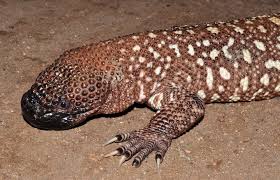
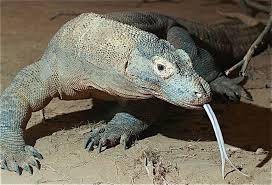
Pictures Of Above Venomous Lizards
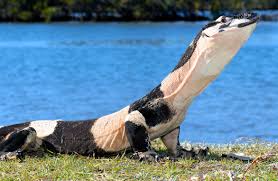
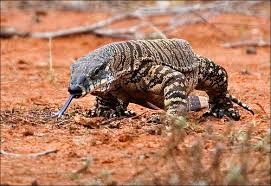
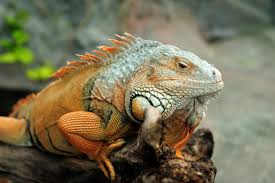
References:
- Wikipedia
- Datta, P.M. & Ray, S. (2006). "Earliest lizards from the Late Triassic (Carnian) of India".
Journal of Vertebrate Paleontology. 26 (4): 95–800. - Hutchinson, M.N.; Skinner, A.; Lee, M.S.Y. (2012).
- reptilecenter.com
- google Search
- Venz, M., Wilson, S., Hobson, R. & Sanderson, C. 2018. Varanus varius.